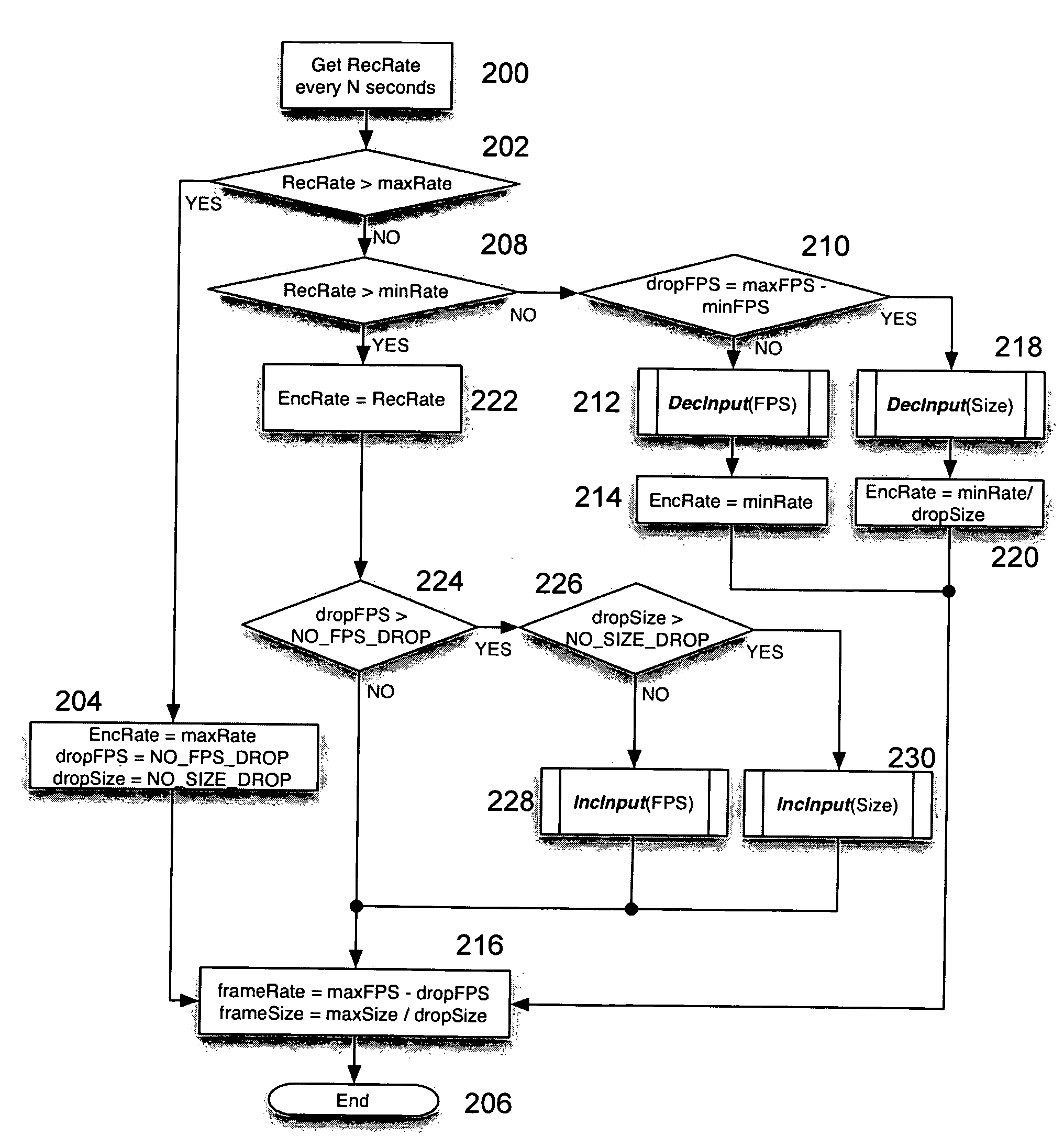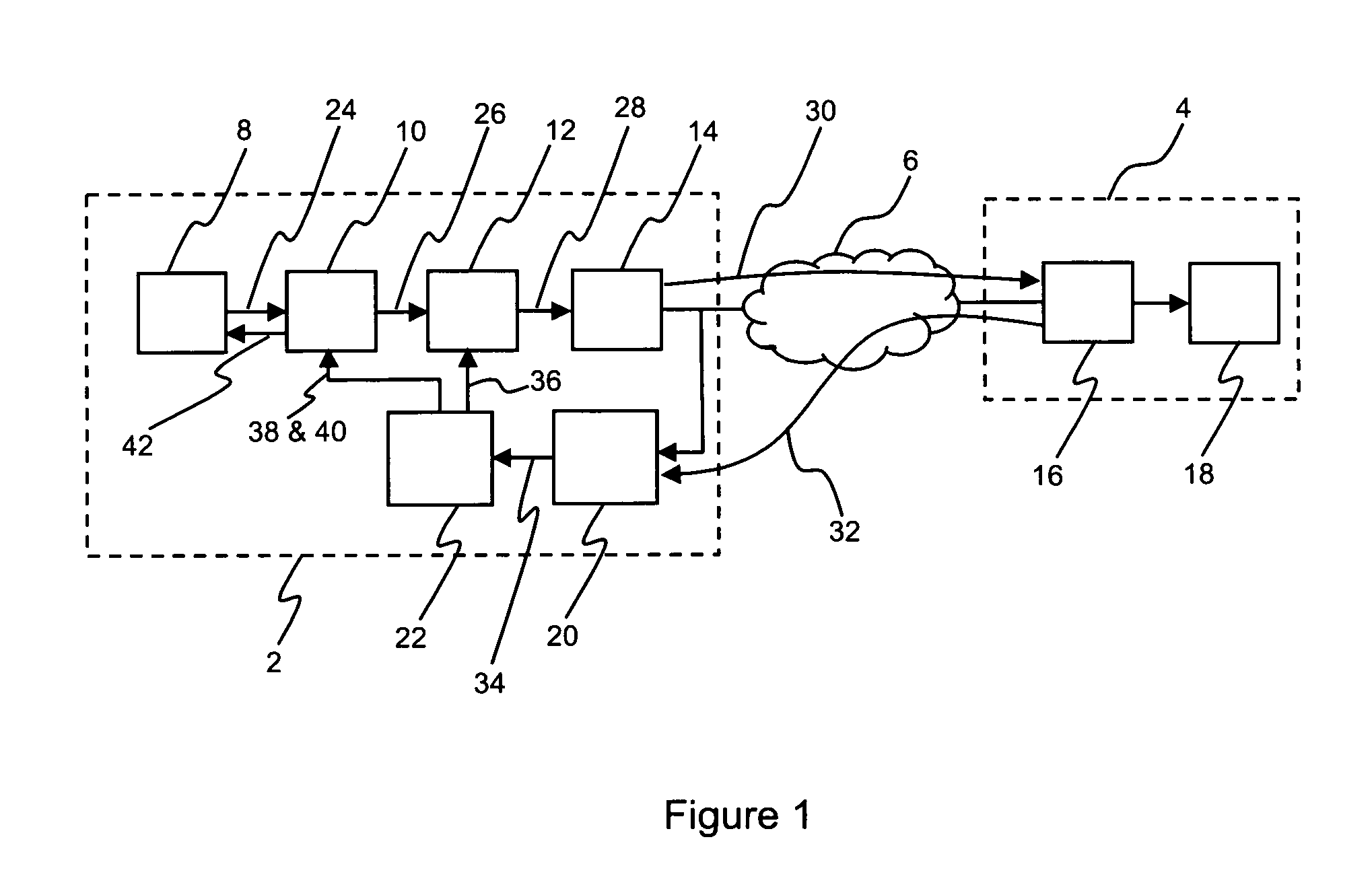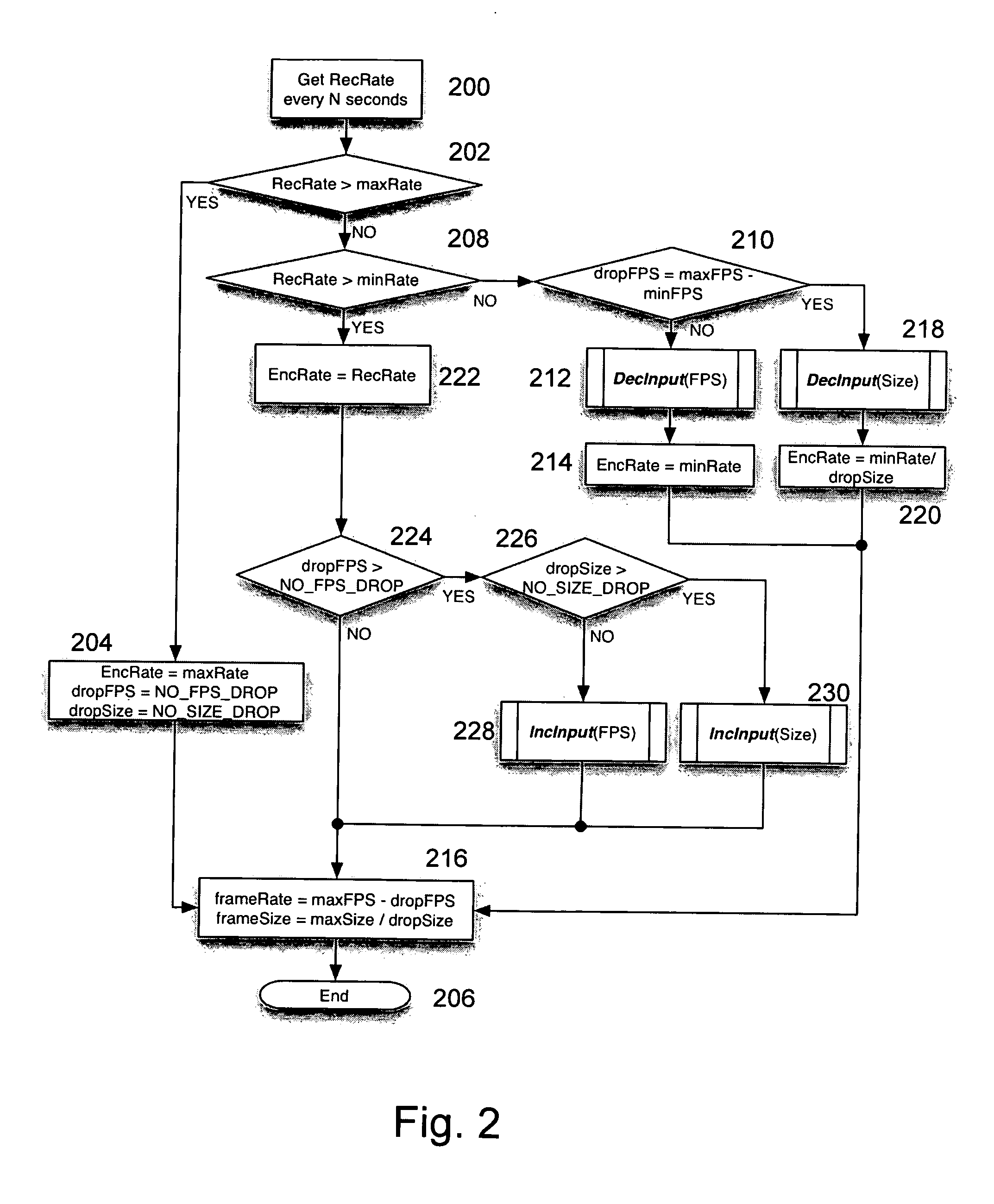Video rate adaptation for congestion control
a congestion control and video rate technology, applied in the field of videoconferencing, can solve the problems of increasing the cost of ownership, and increasing the cost of ownership, and achieve the effect of optimizing the transmission ra
- Summary
- Abstract
- Description
- Claims
- Application Information
AI Technical Summary
Benefits of technology
Problems solved by technology
Method used
Image
Examples
Embodiment Construction
[0011]According to an aspect of the instant invention there is provided a method of exchanging videoconference data between a first endpoint and a second endpoint via a network, comprising: receiving at the first endpoint statistical data that are based on first videoconference data transmitted previously from the first endpoint to the second endpoint via the network, the statistical data determined at the second endpoint and relating to network performance characteristics during a known time-interval of transmitting the first videoconference data thereto; determining, based on the statistical data, an approximately optimized data transmission rate for the network performance characteristics; capturing second videoconference data relating to the same videoconference at a time that is later than capturing of the first videoconference data; adjusting the output bit rate of a video encoder associated with the first endpoint, so as to support transmission of videoconference data via the...
PUM
 Login to View More
Login to View More Abstract
Description
Claims
Application Information
 Login to View More
Login to View More - R&D
- Intellectual Property
- Life Sciences
- Materials
- Tech Scout
- Unparalleled Data Quality
- Higher Quality Content
- 60% Fewer Hallucinations
Browse by: Latest US Patents, China's latest patents, Technical Efficacy Thesaurus, Application Domain, Technology Topic, Popular Technical Reports.
© 2025 PatSnap. All rights reserved.Legal|Privacy policy|Modern Slavery Act Transparency Statement|Sitemap|About US| Contact US: help@patsnap.com



